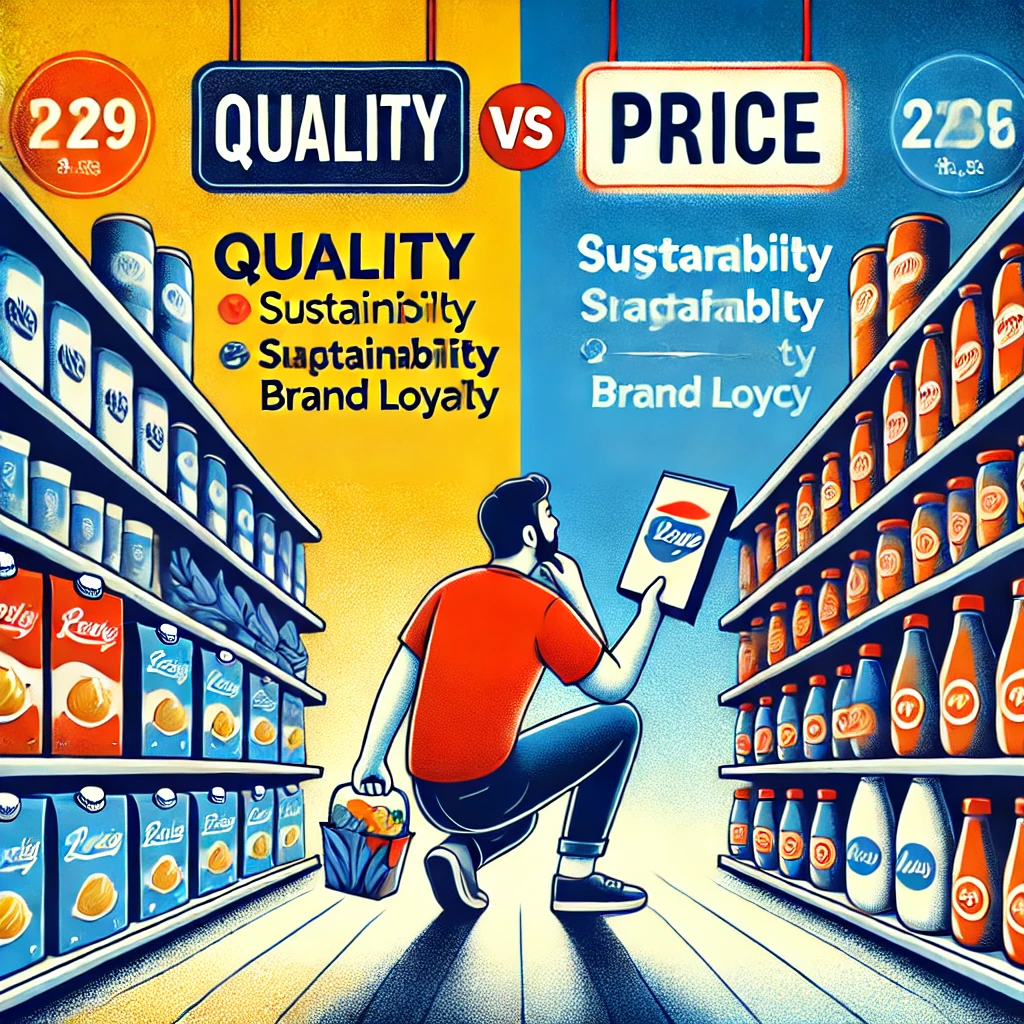
Moment of Truth in Consumer Behavior: Perception vs. Reality
In the world of market research and consumer psychology, one of the most intriguing challenges is the gap between what consumers say and what they do. When asked about their purchasing decisions, respondents often emphasize a range of factors—brand loyalty, quality, ingredients, or social responsibility—asserting that price isn't the main driver of their choice. Yet, once they find themselves in the supermarket aisle, faced with several products and varying price points, many gravitate toward the cheaper option. This phenomenon, known as the moment of truth, highlights the complexities of consumer decision-making and offers valuable lessons for marketers and researchers.
What is the "Moment of Truth"?
The moment of truth refers to the point at which a consumer makes a final purchasing decision, often in-store or online. It is the culmination of their consideration process, where they compare products, weigh different attributes, and decide on a purchase. Despite the influence of advertising, product packaging, or even consumer intentions stated during interviews, this moment is often where reality diverges from perception.
During market research, respondents may express preferences based on values like sustainability, superior ingredients, or brand heritage. But when they are actually shopping and presented with multiple options, the immediacy of price becomes much more influential than they might have originally indicated.
The Disconnect Between Stated Preferences and Actual Behavior
When we ask respondents about their purchasing motivations during focus groups, in-depth interviews, or surveys, many explain their decision process by prioritizing aspects like product quality, brand reputation, or social causes. This insight leads researchers to build a profile of the consumer that seems to value non-monetary elements. However, this often creates a disparity between what consumers say and what they actually do.
In the controlled environment of a research interview, consumers may not feel the pressure of real-world economic considerations. They might genuinely believe that they are driven by factors like sustainability or quality. However, when standing in front of a shelf full of similar products with varying price tags, other psychological triggers—like the desire to save money or maximize value—kick in. This is especially prevalent when there are many options for products that are perceived as relatively similar in quality or function.
The Power of Price in the Moment of Truth
Price sensitivity plays a massive role in that moment when the consumer finally chooses what to buy. Why does this happen?
Cognitive Dissonance: One of the key psychological drivers is cognitive dissonance. Before entering the store, consumers might feel committed to their ideals. However, when price comparisons are presented right in front of them, they begin to experience conflict between their stated values and the reality of the immediate savings opportunity. Faced with tangible prices, they may rationalize their choice to buy the cheaper option by thinking that the quality difference isn’t large enough to justify the price gap.
In-Store Promotions and Discounts: Retail environments are designed to sway consumer behavior in favor of lower-priced products, through techniques like discounts, sales promotions, and loyalty programs. Even the layout of a store can influence buying habits, with cheaper items placed at eye level or near checkout counters to prompt last-minute decisions.
Why Do We Ask About Factors Other Than Price?
Understanding this disparity between stated preferences and actual behavior is essential for marketers and researchers. While it may seem counterintuitive to ask respondents about factors other than price when many will end up choosing based on cost, these questions still provide valuable insights into the emotional drivers and perceptions of consumers.
